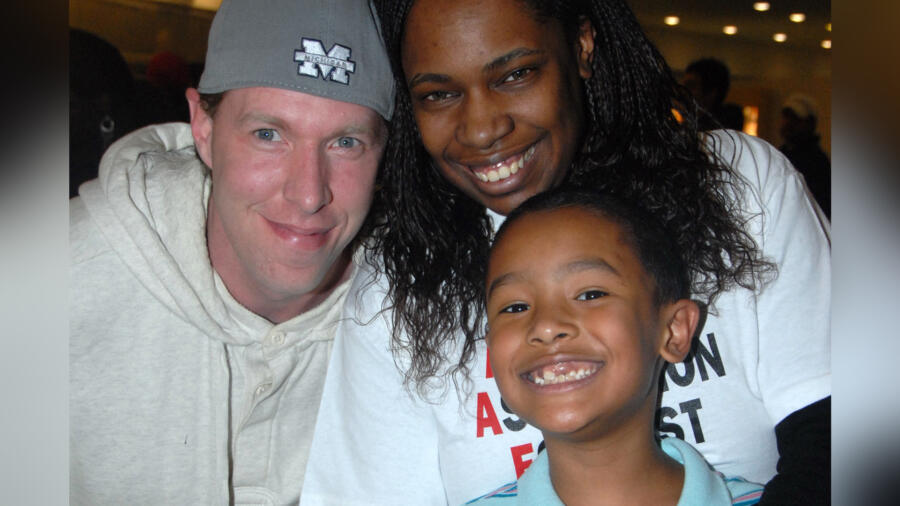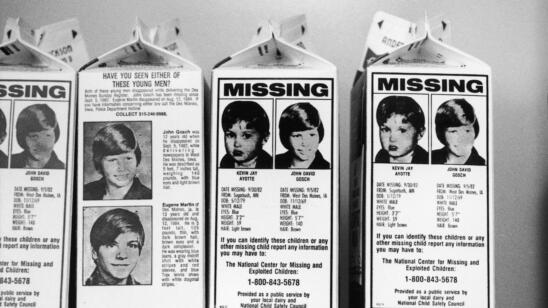It’s been more than 10 years since Tiffany Rubin risked everything to recover her young son Kobe Lee halfway around the world.
The story of then 6-year-old Kobe’s abduction began in August 2007, when his father, Jeffrey Salko, also known as Jeffrey Lee and Kang Shik Lee, failed to return the boy to his mother in Queens, New York following a prearranged custodial visit. Fearing that Salko had possibly taken Kobe out of the country, Rubin hacked into Salko’s email account and saw her worst fear confirmed: Salko had fled with Kobe to his native South Korea.
At the time, Salko was facing a potential prison term for delinquent child-support payments. The New York FBI office obtained a federal arrest warrant for Lee that September.
“I wasn’t sure that I was going to see [Kobe] again,” Rubin told ABC’s Good Morning America in 2009. “…I didn’t get out of bed for a week. I was completely depressed.”
Eventually, the longtime special education teacher started researching online options for help and, soon, her sister-in-law connected her with Mark Miller, founder of the nonprofit, volunteer organization American Association For Lost Children (AAFLC). Unlike other missing children organizations, which typically only offer support and resources, the AAFLC will actually help physically search for and recover missing children in viable cases.
Even though news about Salko and Kobe’s whereabouts was scarce in the beginning, Rubin teamed up with Miller and posted what information she had about her missing son on her Myspace page.
[Watch Beyond the Headlines: The Tiffany Rubin Story in A&E Crime Central.]
In mid-December, someone left an anonymous tip on the page that gave Rubin and Miller a critical piece of information they needed to identify the school Kobe was attending in a town outside of Seoul. Part of the tip mentioned that Kobe was struggling at his new school, being picked on because of the language barrier and that he wasn’t eating well.
Miller told A&E True Crime that despite being scared to travel to a foreign county on what could be a harrowing mission, this news made Rubin “really want her child back even more, and she was determined.”
Miller and Rubin spent months forming a plan and securing funds and finally settled on a date to travel to South Korea, along with a third AAFLC team member, Bazzel Baz, to retrieve Kobe. “Usually there’s a felony charge [in these cases]… an FBI warrant like in Kobe’s case,” Miller says. It’s these types of warrants that can help Miller work with the local authorities and U.S. embassies.
When Rubin, Miller and Baz arrived in South Korea on March 23, 2008, seven months after a now 7-year-old Kobe disappeared, Rubin met with the Myspace tipster who told her how she could enter the school unnoticed and get access to Kobe.
Disguised in a wig, baseball cap and skin-lightening makeup (Rubin is a Black woman), Rubin finally went to Kobe’s classroom to execute the plan and called his name. After Kobe excitedly ran to her, the boy’s teacher recognized Rubin as his mother and let them talk outside while she returned to the classroom. The team then calmly but quickly led Kobe away from the school to a parked taxi waiting a few blocks away.
With Kobe disguised as a girl in a wig and pink-and-blue shirt, they drove straight to the U.S. Embassy to start processing the necessary documents—a tense scene depicted in the popular 2011 Lifetime movie, Taken From Me: The Tiffany Rubin Story, starring Taraji P. Henson.
Both Rubin and Miller agreed that the most nerve-racking moment occurred when the team arrived at the airport and Korean immigration officials resisted letting Kobe leave the country because Salko had already begun the process of making Kobe a Korean citizen. But U.S. officials again stepped in and negotiated a $100 fine to cover Kobe’s expired passport, which would allow him to leave the country.
After the team boarded their flight and were finally airborne, Miller says, “There were plenty of happy tears once the plane took off.”
Today, Kobe Lee is in his twenties and living in Queens. In an exclusive interview with A&E True Crime, he says he’s still close with his mother, Tiffany, who now teaches at a school in the Bronx. He’s currently working on getting a college degree “in English or possibly journalism,” though the pandemic closures have disrupted his classes. He’s passionate about creative writing and shares some of his work on a personal blog, Notes of a Native Son.
While he says he doesn’t remember everything about his experience in South Korea, he has “a handful of memories” that have managed to stay with him.
He doesn’t recall experiencing PTSD after his return but says that he did get some therapy for a brief time to help him with the transition back home. As an adult, though, he’s come to recognize a few underlying effects of the experience, like developing a “deep mistrust of people.” He says he is starting to work through those issues.
After Kobe’s return, Salko tried to email Rubin and Lee a few times, but Rubin never answered. Salko was then arrested in Guam in 2008 after trying to enter the country. He pled guilty to kidnapping and served time in a West Virginia prison. He was released in 2010 and ordered not to have any contact with Kobe until the boy turned 18.
Kobe met up with Salko in 2020 and calls the experience “interesting.”
“My relationship with my father now is not very existent,” he says. “We don’t speak regularly or often.”
Kobe has acknowledged that his lack of a relationship with his father has affected how he views his racial background. “The act of reconciling my biracial heritage of both African American and Korean is very complex,” says Kobe. “This is something I’m always working through, and I suspect I will spend much more of my life working through.”
Related Features:
Angeline Hartmann on Misconceptions About Missing Children Cases


